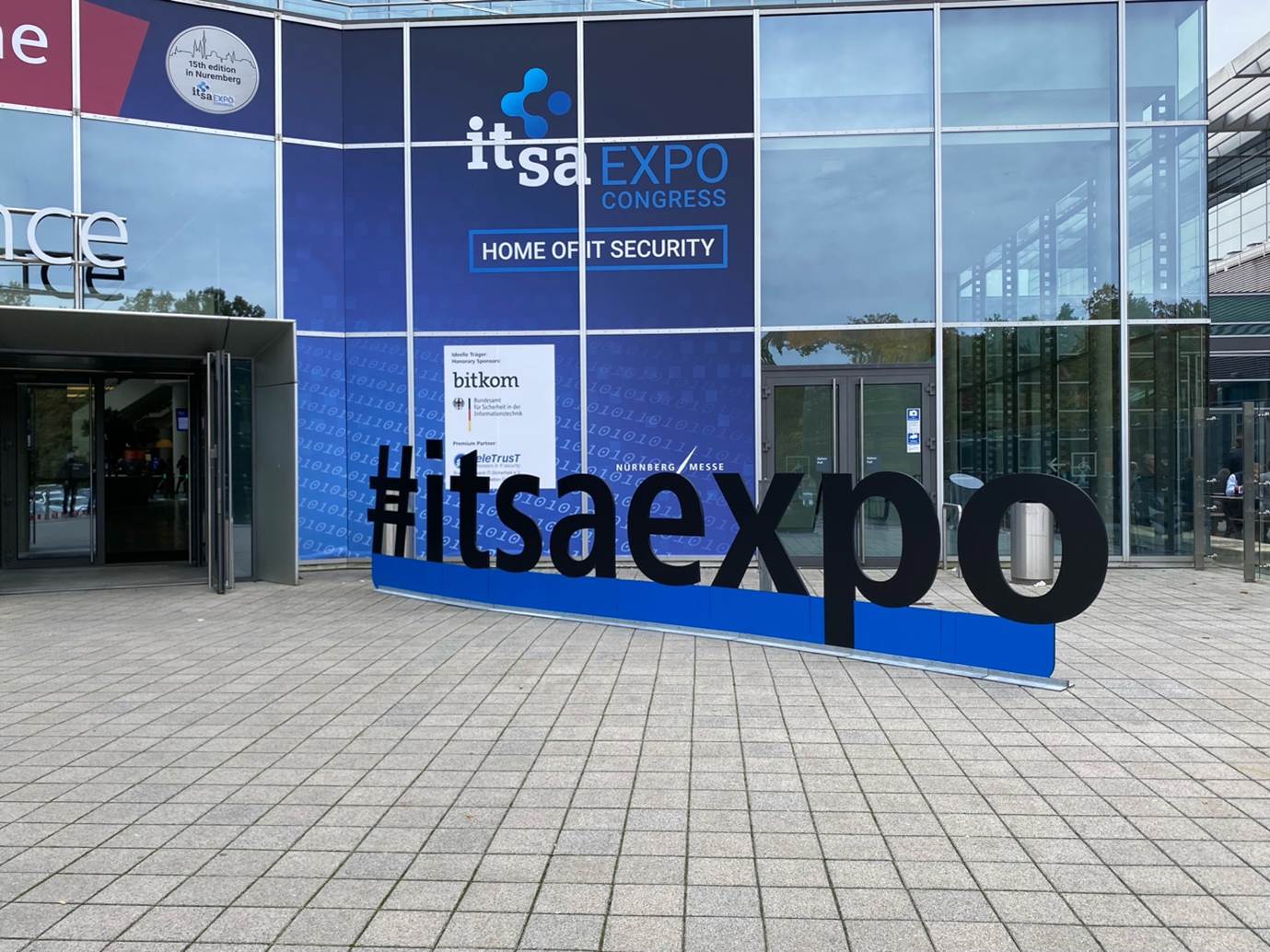A Glimpse into the Future of Cybersecurity
As the threats to Information security multiply and evolve each year, I wasn’t at all surprised to witness the rapid growth of the cybersecurity market at the recent it-sa. In an era where cyber attacks become more sophisticated and frequent, it’s clear that organizations are increasingly prioritizing security measures. This annual gathering showcased some of the latest advancements, strategies, and insights within the field. Walking through the booths, listening to expert talks, and networking with fellow security professionals, I left with a renewed understanding of cybersecurity’s complexities and a fresh perspective on how to combat evolving threats.

A Diverse Range of Solutions
The conference featured a vast array of cybersecurity solutions, ranging from simple email filters to complex Security Information and Event Management (SIEM) systems, as well as Governance, Risk, and Compliance (GRC) tools. What struck me was not just the variety of products but the diversity in their design philosophies. Each company seemed to have its unique strategy for tackling specific threats. While some emphasized proactive monitoring and real-time threat detection, others prioritized automation and user-friendliness. This range of products demonstrates the breadth of cybersecurity needs across different industries and organizational sizes.
From sophisticated intrusion detection systems to advanced firewalls and endpoint protection, the solutions showcased catered to almost every conceivable need. In every conversation and product demo, it became evident that cybersecurity is a multi-faceted field where there’s no one-size-fits-all answer. The optimal approach, therefore, lies in tailoring solutions to fit an organization’s unique resources, risk profile, and requirements.
Expanding Horizons through Expert Talks and Collaboration
One of the highlights of the conference was the opportunity to attend talks by industry experts. These presentations explored various aspects of cybersecurity – from emerging trends and attack vectors to strategies for enhancing system resilience. Engaging with these experts and listening to their insights expanded my understanding of the field. I was reminded that for every cybersecurity challenge, there are often multiple solutions, each with its strengths and weaknesses. Selecting the right approach, therefore, depends heavily on an organization’s specific needs and priorities like threat landscape, cost and ROI, real-time monitoring and analytics, scalability and future-proofing etc. However, determining all these variables requires a deep understanding for the organization context und its processes.
These interactions underscored a critical lesson: cybersecurity is an area where collaborative thinking and experience-sharing can make a profound difference. Discussing issues with professionals from diverse sectors revealed just how adaptable cybersecurity strategies can be. It became clear that although there are established best practices, flexibility and customization are key to effectively defending against ever-evolving cyber threats.
Assessing Cyber Risks with Greater Precision
One of the most valuable takeaways from my experience at the conference was a refined understanding of cyber risks and the latest trends in the field such as generative AI for security and attacks, focus on cloud security and data protection. By diving into discussions about current and anticipated threats, I gained more precise insights into what risks my organization is likely to face and how we can effectively mitigate them. With the knowledge gathered from various talks and interactions, I feel more equipped to evaluate potential vulnerabilities within our systems, anticipate new attack strategies, and take steps to minimize risk.
The conference provided a comprehensive view of the cybersecurity landscape, showing me how to bridge gaps between known vulnerabilities and practical solutions. This knowledge will be indispensable as we continue to refine our defenses and enhance our organization’s resilience against attacks. Better risk assessment, after all, translates into more effective, targeted responses – a necessary capability as cyber threats continue to escalate.
A Technical Focus, Yet a Need for Holistic Solutions
While the conference excelled in presenting technical solutions, it also highlighted a notable gap in many cybersecurity strategies: the need for effective management and system hygiene is highly critical, I realized where there was a successful attack, there was a poor management. Most solutions emphasized advanced technology and innovative approaches to problem-solving. However, the ongoing challenge is that even the most sophisticated tools require well-coordinated integration, along with a solid foundation of system management practices. Without this, technical solutions can only go so far in securing an organization.
Cybersecurity requires more than just technology; it demands a cohesive strategy that includes robust processes, regular system maintenance, and a holistic approach to threat management. Many experts at the conference emphasized that cybersecurity programs that lack foundational management and coordination are, ultimately, still vulnerable. Effective cybersecurity doesn’t rely solely on deploying advanced technology – it requires that every piece of the system, from hardware to personnel, operates in harmony.
The Human Factor: Both a Vulnerability and a Key to Defense
As I walked away from the conference, I reflected on one of the most pervasive themes in cybersecurity today: the role of human factors. While many agree that human error is often the weakest link in cybersecurity, I believe it can also be a powerful line of defense. When properly trained, aware, and vigilant, employees become critical assets in identifying and preventing potential threats.
The conference highlighted that, in many cases, employees can detect suspicious activities or identify vulnerabilities before they turn into incidents. Rather than viewing the human factor solely as a liability, we should see it as an opportunity to enhance cybersecurity resilience. Empowering employees with the right knowledge and tools are, in essence, one of the most effective strategies for reducing cyber risk.
Conclusion
Attending it-sa was an enriching experience that shed light on the latest trends, tools, and strategies in the cybersecurity world. The rapid growth of the market reflects the seriousness of today’s cyber threats, but it also underscores the ongoing need for innovation and adaptation. I left with a better understanding of the many ways we can tailor our approach to security, combining technology, management practices, and human awareness.
In the end, cybersecurity is a collaborative and dynamic field where no solution is perfect, and constant vigilance is required. By recognizing both the technical and human aspects of cybersecurity, we can create a more resilient defense system – one that is prepared not only to face today’s challenges but also to adapt to tomorrow’s.
